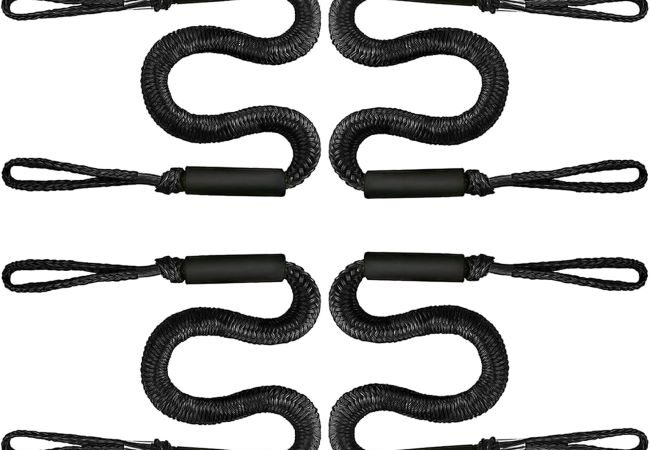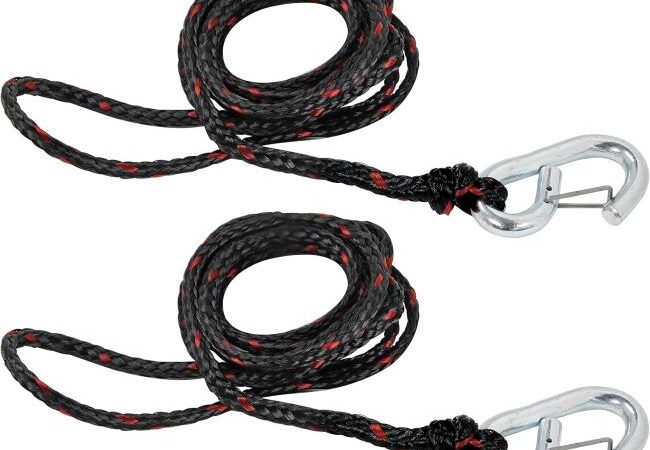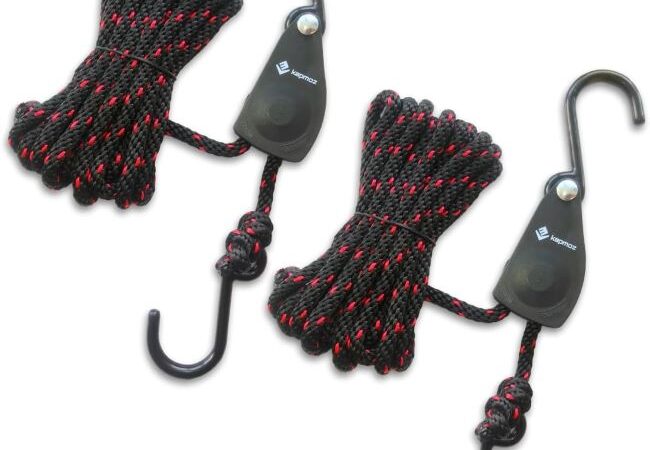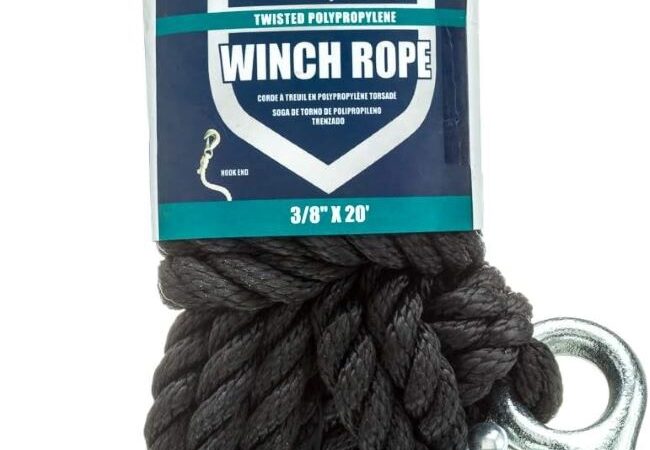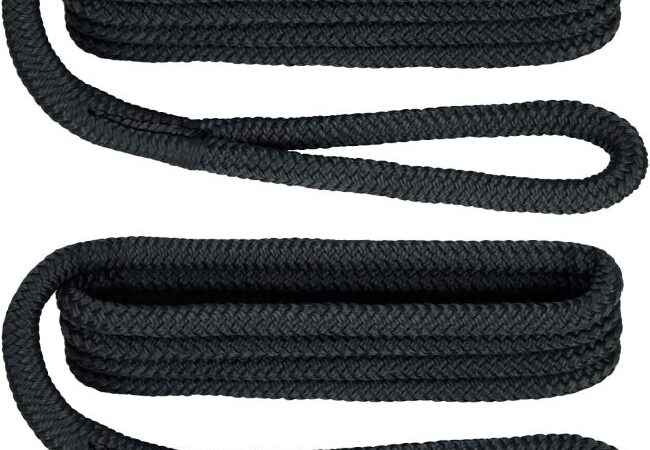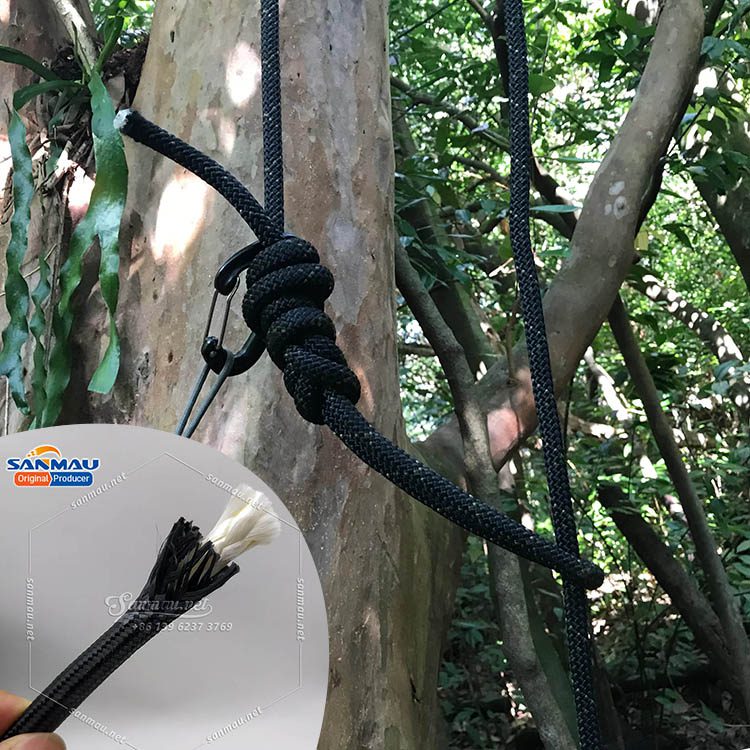
Best Rope for Tree Work: Unbreakable & Safe Options!
The best rope for tree work is typically a static climbing rope with high tensile strength. Arborists often prefer ropes that are durable, lightweight, and have minimal stretch.
Contents at a Glance
ToggleChoosing the right rope for tree work is crucial for safety and efficiency. Professionals in the field of arboriculture need ropes that can handle the rigors of climbing, rigging, and cutting, often under variable weather conditions. These ropes must offer a good grip, resist abrasion, and maintain their integrity against sharp edges and heavy loads.
The ideal rope should also be easy to knot and splice while providing a stable platform for arborists as they ascend and descend. With advancements in materials and technology, modern ropes are designed to meet these specific needs, ensuring that tree care professionals can perform their tasks with confidence and precision. Selecting a high-quality rope is not only a matter of performance but also one of paramount safety for both the arborist and the tree.
Introduction To Arborist Ropes
Arborist ropes are the lifelines of professional tree workers.
They must withstand tough conditions.
Durability, strength, and flexibility are key.
These ropes ensure safety while climbing, rigging, or performing aerial tree work.
The right rope can make all the difference.
Key Qualities Of High-performance Ropes
High-performance arborist ropes share several important features:
- Strength: They support heavy loads without breaking.
- Durability: They resist wear from rough tree bark.
- Flexibility: They easily knot without losing strength.
- Lightweight: They make climbing and work less tiring.
- Low Stretch: They offer better control during tree work.
Safety Standards For Tree Work Ropes
Safety is non-negotiable.
Arborist ropes must meet strict standards.
| Standard | Description | Importance |
|---|---|---|
| ANSI Z133 | US standard for arboricultural operations | Ensures rope performance under stress |
| EN 1891 | European standard for low stretch kernmantel ropes | Guarantees rope strength and elongation limits |
| ISO Certification | International standards for safety and quality | Provides global benchmarks for rope safety |
Always check for these standards before buying a rope for tree work.
Trust only certified ropes for your safety.
Types Of Arborist Ropes
Choosing the right rope for tree work is crucial for safety and efficiency. Arborist ropes come in various types, each with specific features that make them suitable for different tree work tasks. Understanding the types of ropes and their properties helps in selecting the best one for the job.
Static Vs. Dynamic Ropes
Static ropes are designed for situations that require minimal stretch. These ropes are ideal for rigging and climbing when a stable line is needed. They support the weight of the climber and equipment without significant elongation.
Dynamic ropes, on the other hand, offer elasticity. This feature makes them perfect for absorbing the energy from sudden forces, such as a fall. They are generally used in situations where climbing techniques involve more movement.
Material Differences: Polyester, Nylon, And More
The material of an arborist rope affects its strength, durability, and stretch. Common materials include polyester, nylon, and blends.
- Polyester ropes are known for their low-stretch properties. They resist abrasion and hold up well against UV rays and chemicals.
- Nylon ropes are more dynamic, offering higher stretch. They absorb shock effectively, making them suitable for certain types of climbing.
- Some ropes feature blends of materials. These combine the benefits of different fibers, such as strength and stretch resistance.
Ropes may also incorporate other materials or treatments to enhance performance. These can include special coatings that protect against moisture and improve grip.
| Material | Stretch | Use-case |
|---|---|---|
| Polyester | Low | Rigging, stable climbing |
| Nylon | High | Dynamic climbing |
| Blends | Varies | Mixed applications |
The Strength Factor
Choosing the right rope for tree work is crucial. The strength of the rope can mean the difference between a job well done and a serious accident. Let’s explore why strength is so vital.
Tensile Strength Explained
Tensile strength is the maximum stress a rope can withstand while being stretched before it breaks. This measure is crucial for safety and efficiency in tree work.
How Diameter And Construction Affect Strength
Rope diameter and construction play key roles in its strength. A thicker rope generally offers more strength, but the way a rope is made also impacts its durability and load-bearing capacity.
| Diameter | Construction Type | Strength Level |
|---|---|---|
| 10mm | Braided | High |
| 12mm | Twisted | Medium |
| 14mm | Core-dependent | Variable |
- Braided ropes offer a balanced strength-to-weight ratio.
- Twisted ropes are generally strong but may stretch more.
- Core-dependent ropes rely on their inner core for strength, making them suitable for dynamic loads.

Credit: www.youtube.com
Durability Concerns
Durability Concerns are critical when selecting the best rope for tree work. Professionals need ropes that withstand various stresses. This ensures safety and efficiency during operations.
Uv Resistance And Weathering
Ropes exposed to sunlight and harsh weather require UV resistance. UV rays can weaken fibers, reducing rope lifespan. Many high-quality tree ropes have treatments to resist UV damage. This extends their usability and protects your investment.
- Polyester and nylon are popular for their strong UV resistance.
- Look for ropes labeled as UV-stabilized.
Abrasion Resistance In Tree Work
In tree work, ropes often rub against rough bark and branches. Abrasion resistance is essential. Ropes without this feature may fray or snap, posing risks.
| Material | Abrasion Resistance Level |
|---|---|
| Polyester | High |
| Nylon | Medium |
| HMPE (High Modulus Polyethylene) | Very High |
Choose ropes with a protective sheath for extra safety. This sheath guards the core against direct exposure.
For regular tree work, select ropes designed to handle intense physical demands. Your choice can mean the difference between a safe work environment and a hazardous one.
Flexibility And Knotability
Flexibility and Knotability are crucial when selecting the best rope for tree work. A rope must bend and twist with ease. It should form knots without slipping. This balance ensures safety and efficiency. Arbourists often rely on these features for climbing and rigging. Let’s explore the best ropes for different knots and handling tips.
Choosing Ropes For Different Knots
The right rope can make or break a knot. Dynamic ropes stretch to absorb energy, ideal for climbing. Static ropes are less elastic, perfect for rigging. Some common knots and their preferred ropes include:
- Bowline Knot: Works well with most ropes, prefers a medium flexibility.
- Double Fisherman’s Knot: Best with static ropes, as it holds tightly.
- Prusik Knot: Needs a static rope to grip another rope effectively.
Handling And Storage Tips
Proper care extends a rope’s life. Keep ropes clean, dry, and away from sharp objects. Use rope bags to prevent tangles and dirt. Store ropes in a cool, dark place. Avoid chemicals and direct sunlight. Regularly inspect for damage. Follow these tips for a reliable rope in tree work.
| Handling Tip | Why It’s Important |
|---|---|
| Use Rope Protectors | Prevents wear and tear. |
| Avoid Knots When Storing | Reduces stress on fibers. |
| Coil Properly | Prevents kinks and twists. |

Credit: www.amazon.sa
Safety Features
Choosing the right rope for tree work is crucial. Safety features are a top priority. They ensure climbers and arborists stay secure. Let’s explore key safety aspects of ropes.
Breaking Strength Vs. Working Load Limit
Breaking strength refers to the maximum force a rope can handle. This is before it fails. Working load limit (WLL) is the safe force that a rope can handle during normal use. It’s usually a fraction of the breaking strength. To select a safe rope, always check its WLL against the expected load.
| Rope Type | Breaking Strength | Working Load Limit |
|---|---|---|
| Polyester | 8,000 lbs | 1,600 lbs |
| Nylon | 9,000 lbs | 1,800 lbs |
Shock Absorption Properties
A rope’s ability to absorb shock is key. It reduces the risk of failure if a sudden load is applied. Nylon ropes offer great shock absorption. They stretch to cushion the load. This feature is important during falls or when catching branches. Below, see the absorption rates of different rope materials:
- Nylon: High shock absorption
- Polyester: Moderate shock absorption
- Polypropylene: Low shock absorption
Top Rope Recommendations For Arborists
Choosing the right rope is vital for arborists. Safety and efficiency depend on high-quality ropes. Here are the best ropes for tree work.
Product Reviews
Samson ArborMaster Rope: This rope offers excellent strength and flexibility. It is ideal for climbing and rigging. Arborists praise its durability and handling.
- 16-strand design
- High resistance to abrasion
- Available in various colors
Teufelberger TreeMOTION Climbing Rope: Designed for motion efficiency, it maximizes comfort and safety. Its smooth performance is a favorite among professionals.
- Lightweight and strong
- Enhanced grip for better control
- Performs well in all weather conditions
User Experiences And Testimonials
John D., Certified Arborist: “The Samson ArborMaster never lets me down. It’s tough and reliable for daily use.”
Emily R., Tree Care Specialist: “Teufelberger’s rope makes climbing smoother. It feels secure, which boosts my confidence up in the trees.”
| Product | User Feedback | Rating |
|---|---|---|
| Samson ArborMaster | Best for durability and versatility. | 5/5 |
| Teufelberger TreeMOTION | Top pick for comfort and ease of use. | 5/5 |
These ropes meet the needs of arborists. They ensure work is safe and efficient. Trust these products for your tree work.
Maintenance And Care
Proper maintenance and care are essential for the longevity of ropes used in tree work. A well-maintained rope ensures safety and reliability during arborist activities. This section of the blog focuses on how to keep your rope in top condition through routine inspections and best practices for cleaning and storage.
Routine Inspection Guidelines
Inspect ropes before and after each use. Check for signs of wear, such as fraying, cuts, or unusual wear patterns. Look closely at both the inner and outer fibers of the rope.
- Record findings in a rope log.
- Replace ropes showing significant damage.
- Pay extra attention to spliced areas and end terminations.
Cleaning And Storage Best Practices
Keep ropes clean to maintain their integrity. Remove dirt, sap, and debris after each use. Use mild soap and cool water for washing. Avoid harsh chemicals.
Dry ropes naturally away from direct sunlight. Hang them in a well-ventilated space, ensuring they are not bundled or kinked.
| Storage Tips | Do’s | Don’ts |
|---|---|---|
| Temperature | Store in a cool, dry place. | Do not expose to extreme temperatures. |
| Coiling | Coil loosely to prevent kinks. | Avoid tight coils that stress the rope. |
| Chemicals | Keep away from corrosive substances. | Do not store near gasoline or solvents. |
Label and organize ropes by length, type, and use. This practice aids in selecting the right rope quickly and efficiently.
Regulations And Compliance
For arborists and tree care professionals, selecting the right rope is not only a matter of preference but also compliance. High-quality ropes that meet industry standards ensure safety and efficiency during tree work. In this section, we will explore the regulations and compliance factors that are critical when choosing the best rope for tree work.
Industry Standards For Tree Work Ropes
Ropes used in tree work must adhere to strict industry standards. These standards ensure ropes are strong, durable, and reliable. Organizations like the ANSI and the ISA set guidelines to maintain high levels of safety. Ropes meeting these standards can withstand the rigorous demands of tree climbing and rigging.
- ANSI Z133 Safety Requirements for Arboricultural Operations
- ISA Best Management Practices for Tree Work Safety
Professionals should check for these standards when selecting ropes. Compliance with these guidelines is essential.
Certifications To Look For
Certifications give assurance that a rope meets the quality and safety benchmarks. Look for these certifications:
| Certification | Description |
|---|---|
| CE | European conformity marking for safety standards |
| UIAA | International climbing and mountaineering federation approval |
Ropes with these certifications have undergone rigorous testing. They are suitable for tree work. Choosing certified ropes is a step towards compliance and safety.

Credit: www.accessropes.com
Conclusion: Making The Safe Choice
Choosing the right rope for tree work is a crucial decision. It is not just about efficiency or convenience. It is about safety. The lives of arborists depend on the strength, durability, and reliability of the ropes they use.
Summarizing Key Takeaways
- Material matters: Polyester and nylon are top choices.
- Strength is key: Look for ropes with high tensile strength.
- Consider the rope’s abrasion resistance and flexibility.
- Choose ropes certified for climbing or rigging in tree work.
Final Tips For Selecting The Right Rope
- Match rope type to the job: Climbing requires different ropes than rigging.
- Check for industry certifications.
- Inspect ropes before use. Replace them if you find signs of wear or damage.
- Ensure the rope length and diameter suit your needs.
Remember, a rope is an arborist’s lifeline. Take the time to research and choose wisely. Your safety depends on it.
Frequently Asked Questions
What Is The Best Rope For Pulling Over Trees?
The best rope for pulling over trees is a strong, durable polyester or polypropylene arborist rope designed for high tension and abrasion resistance.
What Rope To Use When Cutting Trees?
Use a strong, durable rope for tree cutting, such as a braided polyester or polypropylene arborist rope, designed for high tension and abrasion resistance.
What Size Rope For Tree Work?
For tree work, use a rope with a diameter of 1/2 inch to 3/4 inch, ensuring strength and durability for climbing and rigging tasks.
What Is An Arborist Rope?
An arborist rope is a specialized, durable rope designed for tree climbing and tree care activities. It is strong, flexible, and engineered to support the unique demands of arboricultural tasks.
Conclusion
Selecting the right rope for tree work is crucial for safety and efficiency. Opt for materials that offer durability and flexibility. Remember, the choice can significantly impact the outcome of your tree care tasks. Invest wisely in quality ropes to enhance your tree work experience.
Stay safe and efficient up there!

